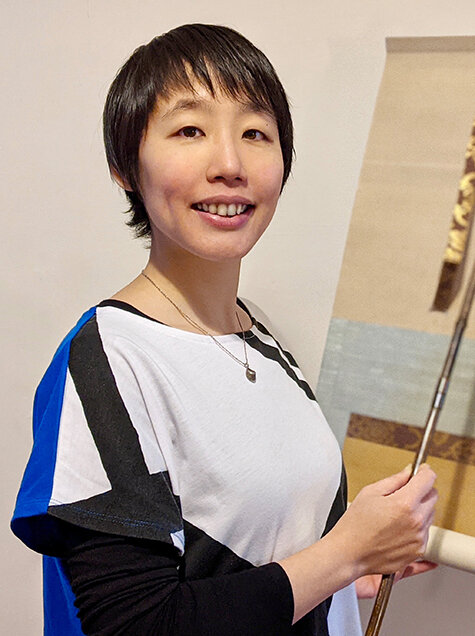Curator of the Israel Goldman Collection
Visiting Researcher in the Department of Asia, British Museum
Graduated from the ICU College of Liberal Arts, June 2005
Enjoying Japanese art in the world with ICU's open-mind approach
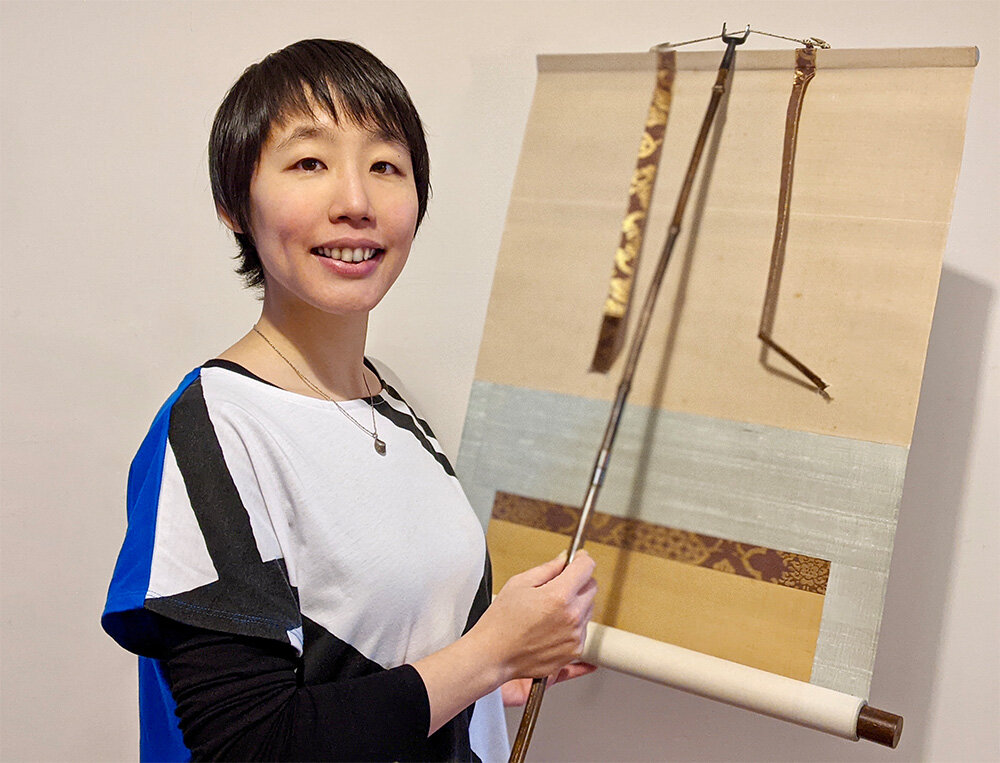
Encountering Kawanabe Kyōsai in Lyon
I'm currently based in London pursuing my research on the painter Kawanabe Kyōsai, who was active during the transition from the Edo period (1615-1868) to the Meiji era (1868-1912). I'm a visiting researcher in the Department of Asia at the British Museum, as well as curator of the Israel Goldman Collection (Israel Goldman is a collector specializing in Kyōsai's works).
Collection curating is a multifaceted job, including cataloging, researching and responding to inquiries. When organizing an exhibition, I'm involved in everything from coming up with the theme of the show to considering how to display the works, and writing labels, panels and the catalogue. In 2022, I curated an exhibition at the prestigious Royal Academy of Arts in London, publishing a book on Kyōsai's animal portrayals as well as the exhibition catalogue.
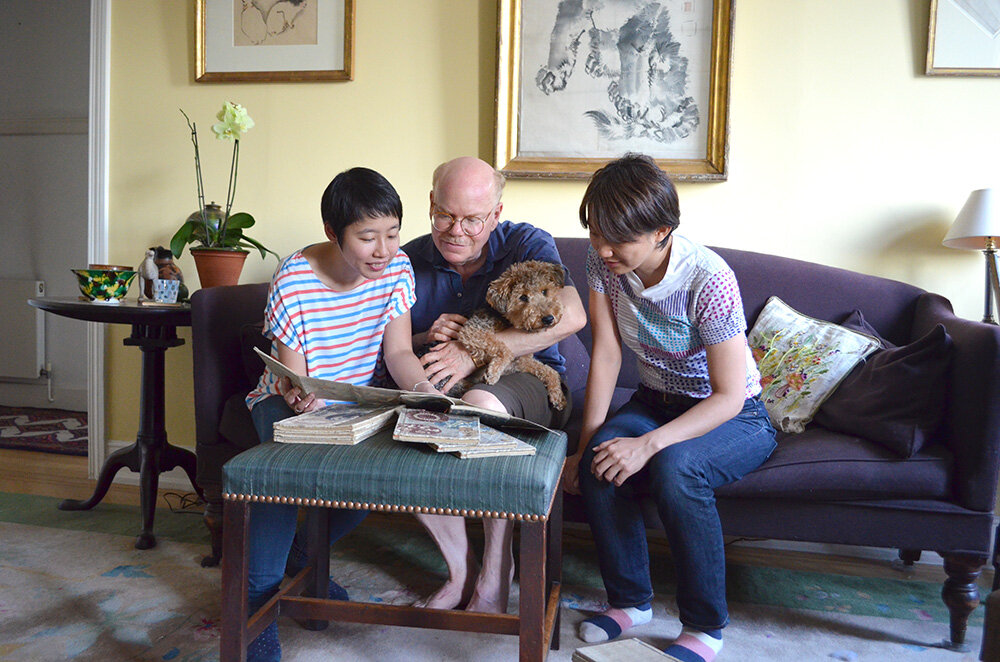
With Kyōsai Shunga co-author Ishigami Aki, Kyōsai collector Israel Goldman, and his beloved Welsh Terrier, Molly
I first became interested in Kyōsai as a research subject in 2005-6 when I was in France for a post-graduation gap year. The idea of my stay in the city of Lyon was to polish my French, which I studied as a second foreign language at ICU, as well as to learn the basics of the practice of art. That's when I stumbled across a certain book in a municipal library--Promenades japonaises : Tokio - Nikko (1880) by French industrialist Émile Guimet. I was fascinated by his vivid depiction of the encounter between Kyōsai and fellow artist Félix Régamey. I always had an interest in artistic exchange between Japan and Europe, and my discovery in Lyon now inspired me to look deeply into this artist Kyōsai.
Kyōsai's appeal lies in his fusion of two Japanese painting modes to create his own distinct painting style. Honga are paintings of traditional subjects using the orthodox methods and formats, with the final image produced based on preparatory drawings. Kyōga, by contrast, deal with topical subjects or arrange traditional themes in a contemporary style, parodying them and adding comedic touches with a freer, more relaxed hand. Kyōsai not only made both honga and kyōga but also fused the two styles in the same work. I think I was attracted by the flexibility and sense of adventure he demonstrates in overcoming long-established boundaries in his pursuit of art for a new era.
The best thing about my job is being able to bring Kyōsai's works back to the limelight. I visit museums and private collections, and have works brought out of storage for me for investigation purposes. I also get to introduce new Goldman acquisitions at exhibitions or in publications. When the public gets a chance to see an artwork for the first time in years and responds with enthusiasm, I feel like my work has brought that piece back to life. That sense of excitement is quite addictive.
New works by Kyōsai continue to be discovered even today. In addition to his art, the way he lived his life was also quite exciting, and there's a lot of scope for further study. I'm looking forward to continuing my research and creating opportunities for Kyōsai and his work to shine even more brightly.
Transboundary and integration lessons at ICU
I chose ICU because it offered abundant opportunities to study abroad and a bilingual education in Japanese and English. Exposure to foreign picture books and young-adult literature from an early age sparked in me an interest in other cultures. I listened to English conversation lessons on the radio and tried my hand on the learning material before I reached junior high. At high school too, I loved foreign movies and music, and in senior high I went to study in the United Kingdom. I lived with a host family for a year in a small rural town and went to the local high school. That experience made me want to return to the UK once I got to university.
When I entered ICU, my interest in the synergy between Japanese and Western arts led me to focus on art-related subjects. Looking back, I feel that education at ICU was open to everyone, unhampered by fixed ideas. For example, rather than insisting that Japanese disciplines be taught by Japanese natives, Japanese art was taught by Prof. Richard L. Wilson from the USA, while Japanese literature was taught by Prof. Tzvetana Kristeva from Bulgaria. That transcendence of national borders and cultural spheres created the perfect environment for new ideas and approaches. I get the same sense from Kyōsai's willingness to go beyond existing norms to combine different pictorial traditions.
In my third year, my wish was granted and I went on a year-long study abroad at University College London (UCL). At UCL, I learned that there were also a variety of methodologies and approaches to Western art. In particular, I became aware of how an artwork can be discussed from different perspectives with their respective interests, creating certain discourses which then impact the significance and the value of that work. Based on that experience, for my graduation project back at ICU, I chose to compare various discourses on the artist Ogata Kōrin in the West in the 19th century and in Meiji-era Japan. As I worked through the diligent process of carefully analyzing written materials to investigate into the historical appreciation of this artist, I felt the appeal of rigorous, analytical inquiry and I decided to continue my research at the postgrad level.
Invaluable communication skills and 'detour' experiences
Skills that I acquired at ICU have also linked directly to my current job. Museums are the best place to put the liberal arts education in practice. In addition to their particular areas of expertise, curators need to be able to speak about a work in various contexts and from diverse perspectives. Even with historical works, it's important to identify their connection with current society and their contemporary significance so as to arouse people's interest. Seeing things from multiple perspectives is a skill which I developed at ICU.
Discussion-based classes and conversation with friends and teachers at ICU also polished my communication skills, which helps me enormously today. For example, any exhibition requires cooperation of a large number of people, including administrative managers, other curators, art handlers who transport and install the work, conservators who look after the work, catalogue editors, and the marketing staff involved in advertising of the exhibition and merchandise. The key to success when putting together an exhibition with people in different positions is communication. The ability to listen to the others with an open mind without sticking only to my own opinions and to enjoy the dialogue is a major asset from my time at ICU.
My message to high schoolers and ICU undergraduates is to embrace detours! A lot of students these days are apparently not taking up a chance to study abroad because they're worried about its impact on their job-seeking. When I was in high school, teachers tried to discourage me from going to the UK to study because, I was told, it would put me at a disadvantage in university entrance exams. But the road to your goal isn't always straight, and there isn't only one route. It was because I took the detour of a gap year after I graduated from ICU that I encountered the artist who I want to spend my whole life studying. Take advantage of the time and energy you have when you're young, and go where your interest takes you and talk with the people you meet. Those experiences will come into their own at the most unexpected moments and open up new avenues, supporting you throughout your life.
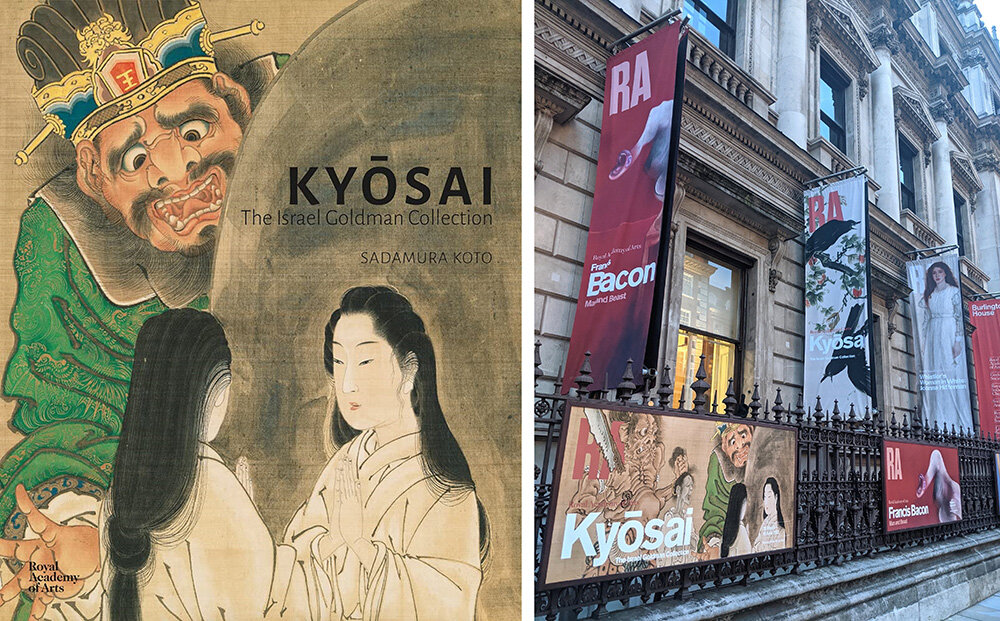
The catalogue of the 2022 Kyōsai exhibition at the Royal Academy of Arts (RA), London [left], and advertising outside the RA building [right]
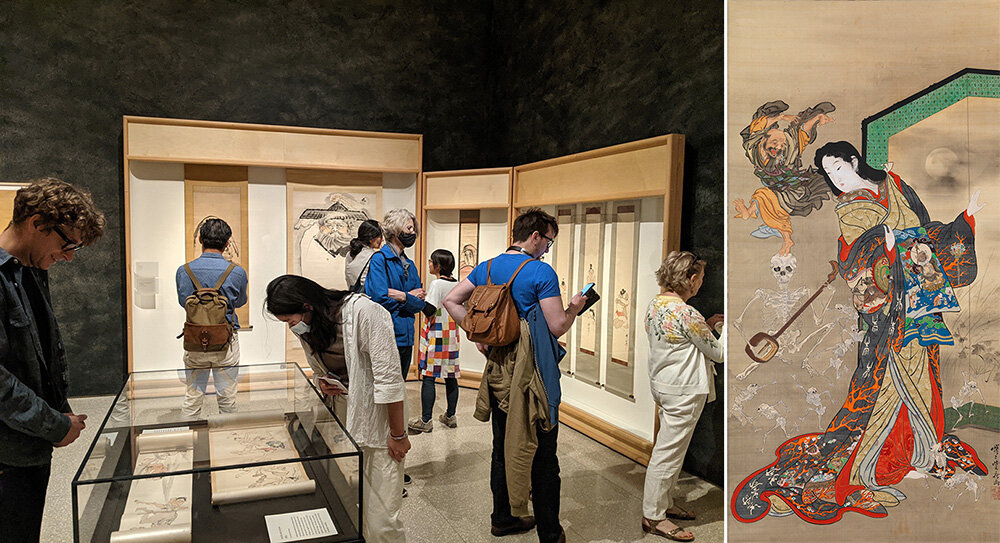
At the RA Kyōsai exhibition (March-June 2022) [left]
and Kawanabe Kyōsai, Hell Courtesan (Jigoku-dayū), dancing Ikkyū and skeletons, 1871-1889, Israel Goldman Collection, London. Photo: Ken Adlard [right]
Profile
Curator of the Israel Goldman Collection, Visiting Researcher in the Department of Asia, British MuseumGraduated from the ICU College of Liberal Arts, June 2005
Majored in humanities at ICU. Became interested in the synergy between Japanese and Western art. After graduation, she spent a year studying in France, where she discovered the appeal of artist Kawanabe Kyōsai through a 19th-century book. Back in Japan, she received her PhD from the Comparative Literature and Culture Course in the University of Tokyo's Graduate School of Arts and Sciences in 2020. While in graduate school, she based herself in London and researched Kyōsai's works in Europe, in 2013, she became a Visiting Fellow at the Harvard-Yenching Institute, studying Kyosai's works in the U.S. She was a fellow at the National Museum of Asian Art in Washington DC from 2016-2019, and at the Sainsbury Institute for the Study of Japanese Arts and Cultures from 2021-2022. She curated the exhibition, Kyōsai: The Israel Goldman Collection, at the Royal Academy of Arts in London in 2022. Her publications include Sex and Laughter with Kyōsai: Shunga from the Israel Goldman Collection (co-authored, 2017), Kyōsai: The Israel Goldman Collection and Kyōsai's Animal Circus: From the Israel Goldman Collection (both 2022).
